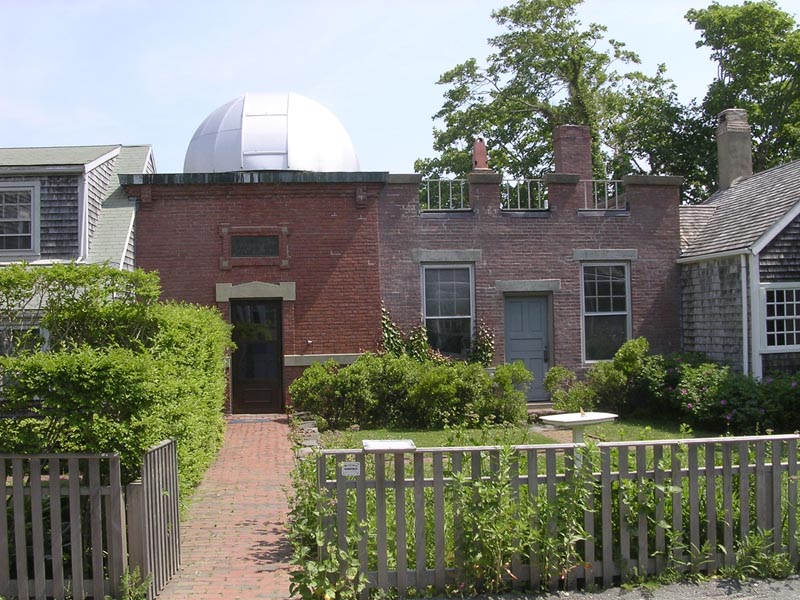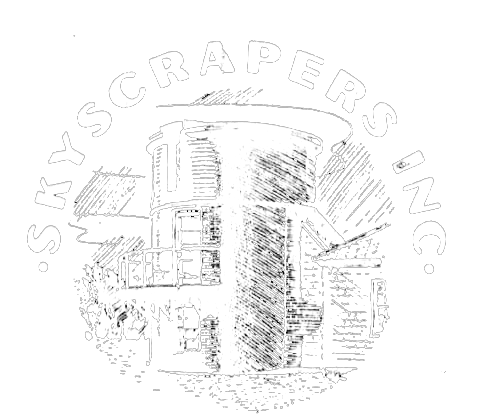Skip navigation
 Maria Mitchell, astronomer, professor and the first woman elected to both the Academy of Arts and Sciences and the American Philosophical Society, was born on Nantucket in 1818. The childhood home of Maria Mitchell defines Mitchell's origins and the development of her independence in the unique atmosphere of a 19th-century whaling town, where for most of the year, the men were at sea. Her early interest in science and the stars came from her father who, besides being a bank officer, rated chronometers for use by the Nantucket whaling fleet in celestial navigation. When Mitchell was 12, she assisted her father in recording the time of an eclipse, and at the age of 17, she created her own school for girls, training them in science and mathematics. In 1838, she became the librarian at the Nantucket Athenaeum, where she gained exposure to great literary and scientific personages. She spent her evenings in an observatory her father had built on the roof of the Pacific Bank, his employer's firm. When, on October 1, 1847, Mitchell telescopically sighted a comet using her father's two-inch telescope in the rooftop observatory, she became the first person to record a comet sighting in America. Her quiet life on Nantucket immediately changed. She received international fame, she was elected to prestigious academic organizations and she became the first woman to see the Vatican observatory. In 1860, she and her father moved to Lynn, New York, where Matthew Vassar asked her to become a professor at his new college for women. Today, the Nantucket Maria Mitchell Association preserves the Maria Mitchell house as a museum that contains many of Mitchell family heirlooms. A domed observatory and a library and research center for young scientists was added to the house after her death.
Maria Mitchell, astronomer, professor and the first woman elected to both the Academy of Arts and Sciences and the American Philosophical Society, was born on Nantucket in 1818. The childhood home of Maria Mitchell defines Mitchell's origins and the development of her independence in the unique atmosphere of a 19th-century whaling town, where for most of the year, the men were at sea. Her early interest in science and the stars came from her father who, besides being a bank officer, rated chronometers for use by the Nantucket whaling fleet in celestial navigation. When Mitchell was 12, she assisted her father in recording the time of an eclipse, and at the age of 17, she created her own school for girls, training them in science and mathematics. In 1838, she became the librarian at the Nantucket Athenaeum, where she gained exposure to great literary and scientific personages. She spent her evenings in an observatory her father had built on the roof of the Pacific Bank, his employer's firm. When, on October 1, 1847, Mitchell telescopically sighted a comet using her father's two-inch telescope in the rooftop observatory, she became the first person to record a comet sighting in America. Her quiet life on Nantucket immediately changed. She received international fame, she was elected to prestigious academic organizations and she became the first woman to see the Vatican observatory. In 1860, she and her father moved to Lynn, New York, where Matthew Vassar asked her to become a professor at his new college for women. Today, the Nantucket Maria Mitchell Association preserves the Maria Mitchell house as a museum that contains many of Mitchell family heirlooms. A domed observatory and a library and research center for young scientists was added to the house after her death.
See Also
Maria Mitchell Observatory Trip, Nantucket Island
 Maria Mitchell, astronomer, professor and the first woman elected to both the Academy of Arts and Sciences and the American Philosophical Society, was born on Nantucket in 1818. The childhood home of Maria Mitchell defines Mitchell's origins and the development of her independence in the unique atmosphere of a 19th-century whaling town, where for most of the year, the men were at sea. Her early interest in science and the stars came from her father who, besides being a bank officer, rated chronometers for use by the Nantucket whaling fleet in celestial navigation. When Mitchell was 12, she assisted her father in recording the time of an eclipse, and at the age of 17, she created her own school for girls, training them in science and mathematics. In 1838, she became the librarian at the Nantucket Athenaeum, where she gained exposure to great literary and scientific personages. She spent her evenings in an observatory her father had built on the roof of the Pacific Bank, his employer's firm. When, on October 1, 1847, Mitchell telescopically sighted a comet using her father's two-inch telescope in the rooftop observatory, she became the first person to record a comet sighting in America. Her quiet life on Nantucket immediately changed. She received international fame, she was elected to prestigious academic organizations and she became the first woman to see the Vatican observatory. In 1860, she and her father moved to Lynn, New York, where Matthew Vassar asked her to become a professor at his new college for women. Today, the Nantucket Maria Mitchell Association preserves the Maria Mitchell house as a museum that contains many of Mitchell family heirlooms. A domed observatory and a library and research center for young scientists was added to the house after her death.
Maria Mitchell, astronomer, professor and the first woman elected to both the Academy of Arts and Sciences and the American Philosophical Society, was born on Nantucket in 1818. The childhood home of Maria Mitchell defines Mitchell's origins and the development of her independence in the unique atmosphere of a 19th-century whaling town, where for most of the year, the men were at sea. Her early interest in science and the stars came from her father who, besides being a bank officer, rated chronometers for use by the Nantucket whaling fleet in celestial navigation. When Mitchell was 12, she assisted her father in recording the time of an eclipse, and at the age of 17, she created her own school for girls, training them in science and mathematics. In 1838, she became the librarian at the Nantucket Athenaeum, where she gained exposure to great literary and scientific personages. She spent her evenings in an observatory her father had built on the roof of the Pacific Bank, his employer's firm. When, on October 1, 1847, Mitchell telescopically sighted a comet using her father's two-inch telescope in the rooftop observatory, she became the first person to record a comet sighting in America. Her quiet life on Nantucket immediately changed. She received international fame, she was elected to prestigious academic organizations and she became the first woman to see the Vatican observatory. In 1860, she and her father moved to Lynn, New York, where Matthew Vassar asked her to become a professor at his new college for women. Today, the Nantucket Maria Mitchell Association preserves the Maria Mitchell house as a museum that contains many of Mitchell family heirlooms. A domed observatory and a library and research center for young scientists was added to the house after her death.



